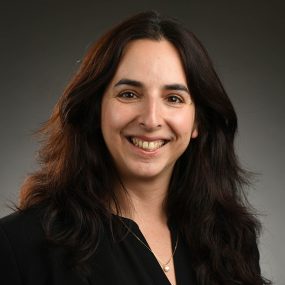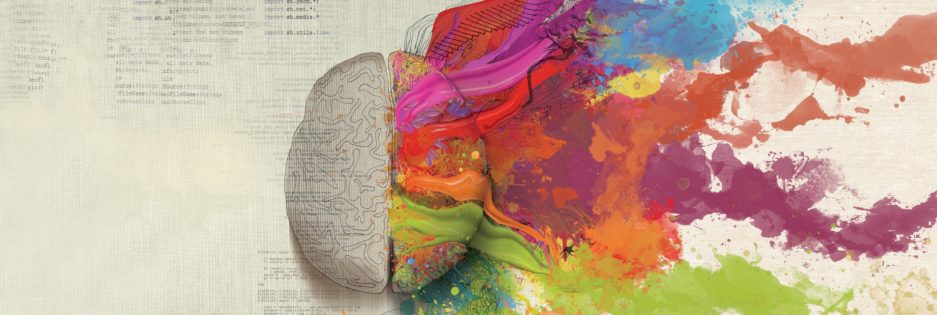In this column, I ask neuroscience professors from around the world the same five questions. Read on to learn more about their research, careers and goals for neuroscience in the future.

Interview with Elissa Aminoff, Ph.D.
Assistant Professor
Department of Psychology, Fordham University
Dr. Aminoff’s research focuses on the use of a combination of neuroimaging techniques (fMRI, EEG, MEG, ECoG), computational models (e.g. artificial vision models) and cognitive theory to investigate how visual information is processed in the brain. She investigates how experience and context interact with visual perception by investigating the intersection of high-level vision and memory.
She received her bachelor’s degree in cognitive neuroscience from Brown University and her master’s and doctorate in psychology from Harvard University.
1. What inspired you to pursue neuroscience as a career?
As a high school student, I learned about the different lobes of the brain and how function could be associated with different locations of the brain. This fascinated me. Our reality was a product of how our brain processes information – and we could learn how the brain accomplished such a task! The more I learned about brain-behavior relationships, the more fascinated I was. The excitement I felt when getting new data drove me to pursue a career in neuroscience.
2. What do you think is the most important goal of neuroscience research?
There is not a single important goal of neuroscience research. There are lots of important goals. One that I find particularly interesting is a goal of connecting the dots across levels of neuroscience. To elaborate – we have some understanding what happens at the neuronal level, and some understanding of what happens at brain region level, but the connection between the two is still unknown. For example, we know that task shifting is a frontal cortex activity, but can we understand the mechanisms in which the frontal cortex is engaged all the way down to understand how individual neurons work together to accomplish a task? Another example is how do we connect more low-level processing to high-level processing? For example, in processing a visual object, we have an idea of what early visual regions like V1 are doing, and we have an idea of what is going on at the object level in the lateral occipital cortex, but what does it really mean to have a system that unites the two? How is information passed? What information is processed in mid-level vision to unite low-level and high-level? And one of the big unknowns is how the role of top-down processing is implemented. We know it exists, but the ins and outs of how is unknown. These questions and goals relate to an effort to better understand neural mechanisms underlying behavior. But there are many other goals in neuroscience, some targeted to helping treat patient populations, others to purely understand how different cells and molecules play a role. Neuroscience is a fascinating field with so many questions, it would be quite limiting to think there was only a single most important goal.
3. What are the main topics and goals of your research?
My lab studies how vision is not an isolated process but one that is integrated across cognition influenced by our own knowledge, experiences, and mind states. I study how when we process a scene, we are not just processing a class of visual stimuli, but rather are processing all the associations, contents and knowledge that the picture evokes. The idea of scene processing is very complex – we are still learning a lot about how we process a scene. What are the key features? How do object perception and scene perception intersect? What is the role of top-down processing in processing the visual input to our system? And moreover, based on how we process visual stimuli, how does that affect downstream cognitions like how we remember an event? My goal is to have a more integrated understanding of high-level vision: one that integrates across the many cognitions that may influence vision; and on the other hand, how visual understanding can influence all the related cognitions. I use neuroimaging, behavioral, and computational methods to address these questions.
4. What accomplishment do you think is the most important out of your own research?
I think some of my work suggesting that the brain regions associated with scene processing can be better understood as processing associations, of which scenes are a dominant class rich with associations, provides a link across the literature related to these regions and hopefully has moved our understanding forward.
5. What do you hope to accomplish in the next 10 years in the field of neuroscience?
I am really hoping to understand more about neural timing associated with understanding a scene. Using EEG, I hope to have a better understanding of how top-down processing plays a role in scene processing and in what specific aspects it is relevant. I then hope to reveal the specific spatio-temporal dynamics of the underlying mechanisms of how our scene understanding can affect many cognitions (memory, language, decision making) and be relevant across large swaths of behavior.
Bonus question: What is your advice to a teenager who wants to learn more about neuroscience?
Explore! Now is the time to learn and be exposed to lots of things. Neuroscience is an amazing field with so much to learn. Find something that gets you excited – and learn more, find ways to get more exposure. The only way to be successful in neuroscience is to be passionate about it… and it takes time and lots of exploration to find your real passion!
